Facebook opens Portals to a more visual experience
One of Mark Zuckerberg’s visions has been to develop Facebook as a more visual platform and this is exactly what Portal does.
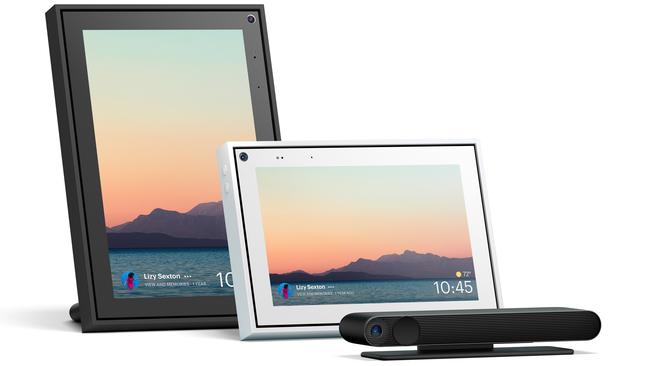
If you can’t cram enough Facebook into your life, we can fix that in an instant.
One of chief executive Mark Zuckerberg’s long-term visions has been to develop Facebook as a more visual platform. His acquisition of Oculus VR suggests a future where Facebook friends from across the world might meet together in virtual reality. But that’s a fair hike away. For now, it’s 2D video.
Facebook took a step in this direction 16 months ago when it released portals that let you enjoy the social medium more as a video calling/streaming experience. It has produced a second generation of these portals, which it is making available in Australia. The company says it has seen a tremendous growth in video calling across its platform.
There are four models. Three are stand-alone units that look like photo frames. There’s the 10-inch, 720p HD display Portal. Portal Mini is smaller with an 8-inch screen. Portal+ is a super-sized version with a 15.6-inch display.
The fourth, Portal TV, doesn’t have a screen of its own. Instead. it connects to your TV by an HDMI cable and brings your Facebook experience to your big, living room screen.
The Portals link to your home network by Wi-Fi and have Bluetooth for connecting headphones and speakers. They don’t support wireless keyboards.
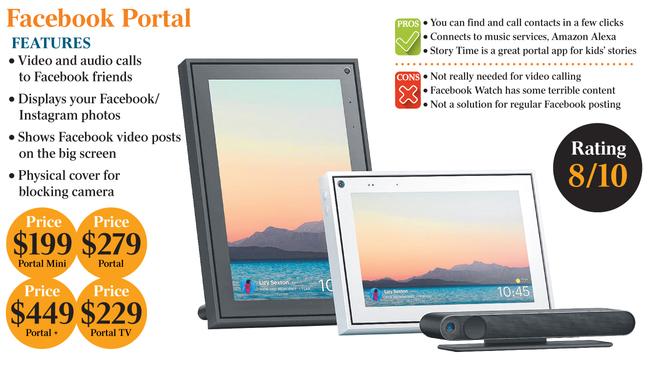
All Portals offer similar features. First and foremost, you can conduct two-way video and audio conversations with your Facebook friends, Messenger and WhatsApp contacts by pressing a few buttons. Your friends don’t need portals. They can chat to you from their phones and tablets.
Of course, you can already make video calls to friends using the Messenger and WhatsApp apps on your phone. The portal offers convenience and a different packaging.
Portal, Portal Mini and Portal+ are like a 21st century PABX on your desk or table. Your friends and contacts are a couple of presses away. They are organised into favourites, recent, Messenger, and WhatsApp contacts, and you can search across categories. Portal lets you send them a video message if they are not available.
Portal TV looks like a miniature sound bar and connects to your TV using an HDMI cable. You either link it to your Wi-Fi network, or connect it to Ethernet using the USB-C port on the back and a USB to Ethernet adaptor, which you need to buy. Wi-Fi worked fine for me.
However, you will have to buy an HDMI cable for the TV link as Facebook doesn’t supply one.
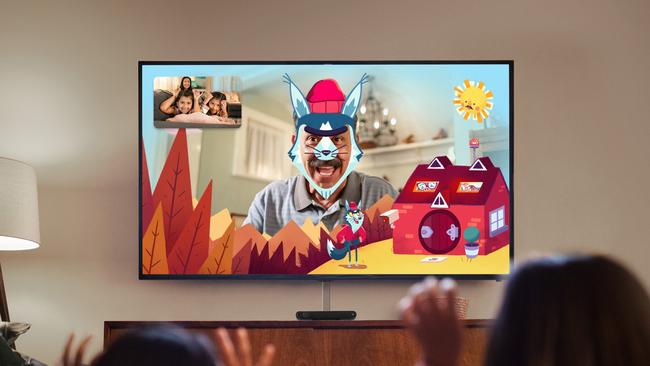
Portal TV has a wide angle camera that can zoom in on you in your living room, track you if you start walking around and frame you in the video. As with other video-calling platforms, you appear in a square in the corner while on a video call with a friend. But that square fades if it obscures anyone at the other end.
Portal TV is operated using a small and very useful remote control. The other Portals don’t have remotes. Their screens are touch-sensitive. So you can tap on a person to enlarge them in the shot during a call.
Privacy is a major concern whenever you invite a camera into your home or office. Facebook has added hardware covers that slide across the camera lenses. You can also mute the microphone and switch off both microphone and camera.
Video and audio calls are only part of what the Portals offer.
You can switch on “superframe” and have Portal units display your Facebook and Instagram photos when idle. You can finetune whether a Portal displays just photos of you, favourite photos, mobile, timeline or cover photos, particular Facebook albums and more. You can link the Portals to your Amazon account and send voice commands to Alexa. You can link your Spotify or Deezer accounts and control music from the display.
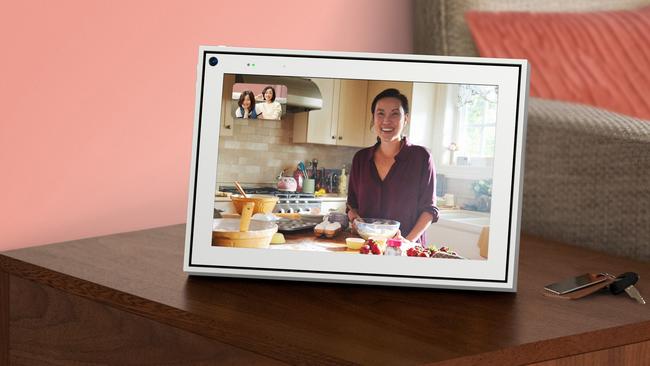
The Portals include a series of apps. There’s Red Bull TV, Neverthink, which offers a curated list of selected YouTube videos, although I fail to see what quality control they offer, and Facebook Watch, where the video clips come from Facebook itself. Frankly, the top videos show the same lack of curating we see across Facebook in general with lots of misleading and outrageously wrong information masquerading as fact.
Dig deeper and there’s some Facebook original entertainment content, featured shows, video from Facebook pages you follow, popular live content such as the Trump impeachment trial last week, gaming action, TV preachers in full flight saving souls and news sources, many of which I have never heard of before.
I can watch a channel of videos I have uploaded myself and there’s a channel dedicated to videos I have watched before on Facebook. Yes, Facebook has kept tabs even though I barely remember watching some of them.
The frame Portals have more apps than Portal TV. They include Facebook Gaming, Facebook Live, and a browser with access to your regular Facebook feed, YouTube, Amazon, Wikipedia and Yahoo. It’s not very practical as you are restricted to using an on-screen keyboard.
The best app so far is Story Time. You can select a story and read it to a child as the cartoon plays on the display. You become the storyteller with your face superimposed in the story cartoon image. Sometimes you are also depicted as one of the characters. I became the Big Bad Wolf in Little Red Riding Hood. There are about 20 stories to choose from and Facebook says it adds a new one monthly. You can share stories with friends from your Portal to other Portals and mobiles.
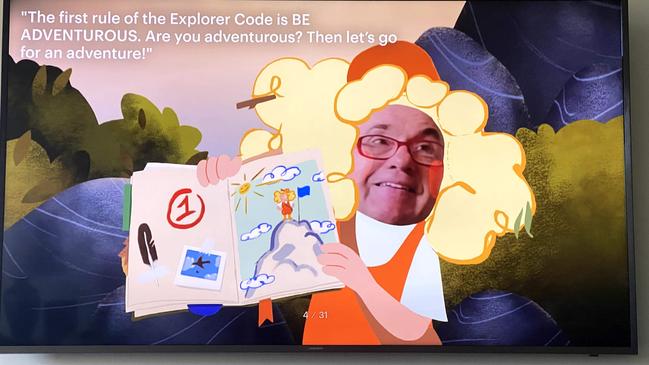
Expect to see more hardware from Facebook over time. Like other tech giants, it continues to spread its wings. Since 2005 it has acquired more than 80 companies, including Instagram, WhatsApp, and virtual reality hardware maker Oculus VR.
It’s latest acquisitions are immersive VR gaming start-up Beat Sabre, and Spanish cloud gaming service PlayGiga. These further fuel the belief that Facebook will take on Apple Arcade and Google Stadia and grab a share of the multi-billion-dollar online gaming revenue.
Last year it said it wanted to launch its own cryptocurrency, but that plan has received major setbacks.
The Portals represent a move towards a more visual Facebook offering, which is where Facebook is heading. But without a Bluetooth keyboard, the Portals are awkward for posting text. For that, you need to stick to your phone, tablet or computer.
You can buy the four devices online from Facebook Australia. The costs are $199 for Portal Mini, $279 for Portal, $449 for Portal+ and $229 for Portal TV.
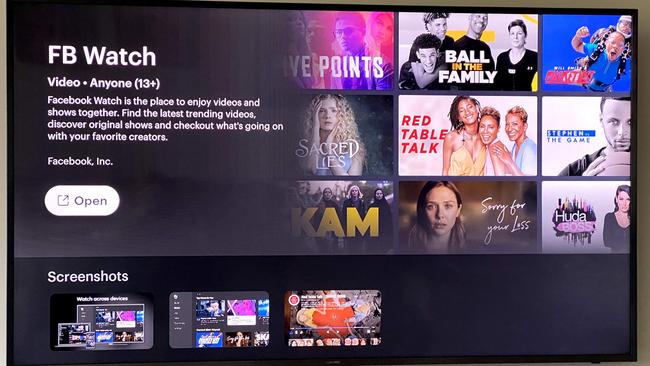



To join the conversation, please log in. Don't have an account? Register
Join the conversation, you are commenting as Logout